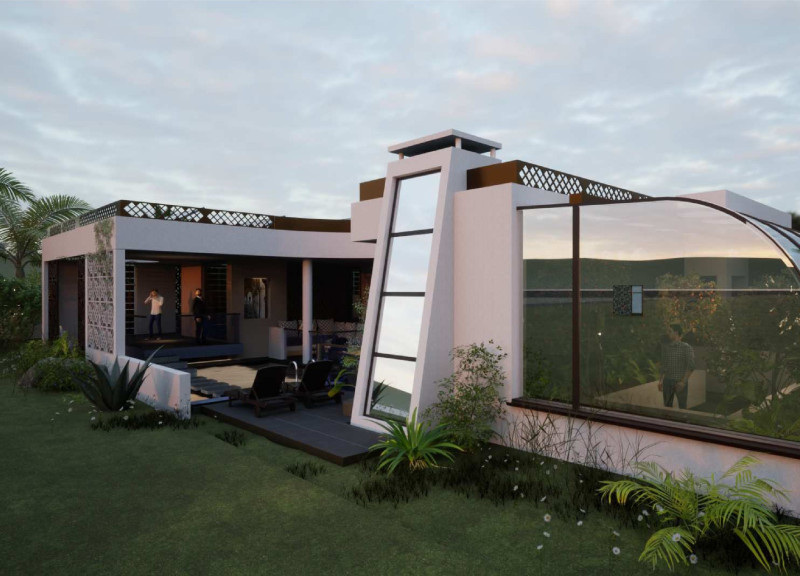5 key facts about this project
At first glance, one can appreciate the project's meticulous layout, which prioritizes both public engagement and private retreat. The exterior showcases a careful selection of materials that contribute to its overall character. The use of locally sourced stone provides a sense of permanence and durability, grounding the structure in its geographical context. Large expanses of glass are equally important in the design, allowing for natural light to permeate the interiors and offering views of the surrounding landscape. The interplay between the rigid elegance of stone and the fluid transparency of glass creates a dialogue that enhances the building's presence.
Within the project, thoughtful spatial organization is evident. The design incorporates open spaces that encourage movement and interaction among users. Flexible areas have been included to allow for various activities, ensuring that the space is not only functional but also adaptable to different events and gatherings. Each room is purposefully designed with attention to users’ needs, integrating utility with comfort. Details such as built-in seating and integrated technology reflect a contemporary understanding of how spaces are used in daily life, ensuring that the architecture remains relevant in the ever-evolving urban context.
Landscaping plays a crucial role in this project, as the external environment is designed to complement and enhance the architectural design. Native plants and sustainable landscaping practices have been employed to create a natural buffer that seamlessly connects the building with the outdoor landscape. This not only strengthens the building's relationship with nature but also demonstrates a commitment to sustainability that resonates with today’s architectural considerations.
What sets this project apart is its unique design approach that embraces the ideology of sustainability and community. The architects have taken significant strides to ensure that the building is not merely an isolated structure but rather a node in a larger network of urban life. Features such as rainwater harvesting systems and green roofs exemplify a commitment to reducing the building’s ecological footprint. This conscientious approach is reflected in the energy-efficient materials chosen, which contribute to reduced energy consumption and operational costs.
The architectural ideas manifest in both the macro and micro scales, from the overall form of the building to the smallest details of light fixtures and finishes. Every element has been considered, contributing to a cohesive narrative that runs throughout the project. This attention to detail is crucial in creating spaces that feel intimate yet expansive, modern yet timeless.
As you delve deeper into the project, consider exploring the architectural plans and sections that illustrate the careful thought behind every aspect of the design. Analyzing these elements will provide you with further insights into the architectural ideas that define this project, showcasing how contemporary design can harmonize with functionality and sustainability. The journey through this architectural project reveals much about the current trends in design while offering a blueprint for future developments in similar contexts. For those interested in the nuances of architectural design, a closer look at these elements is encouraged, promising a richer understanding of this remarkable project.


























